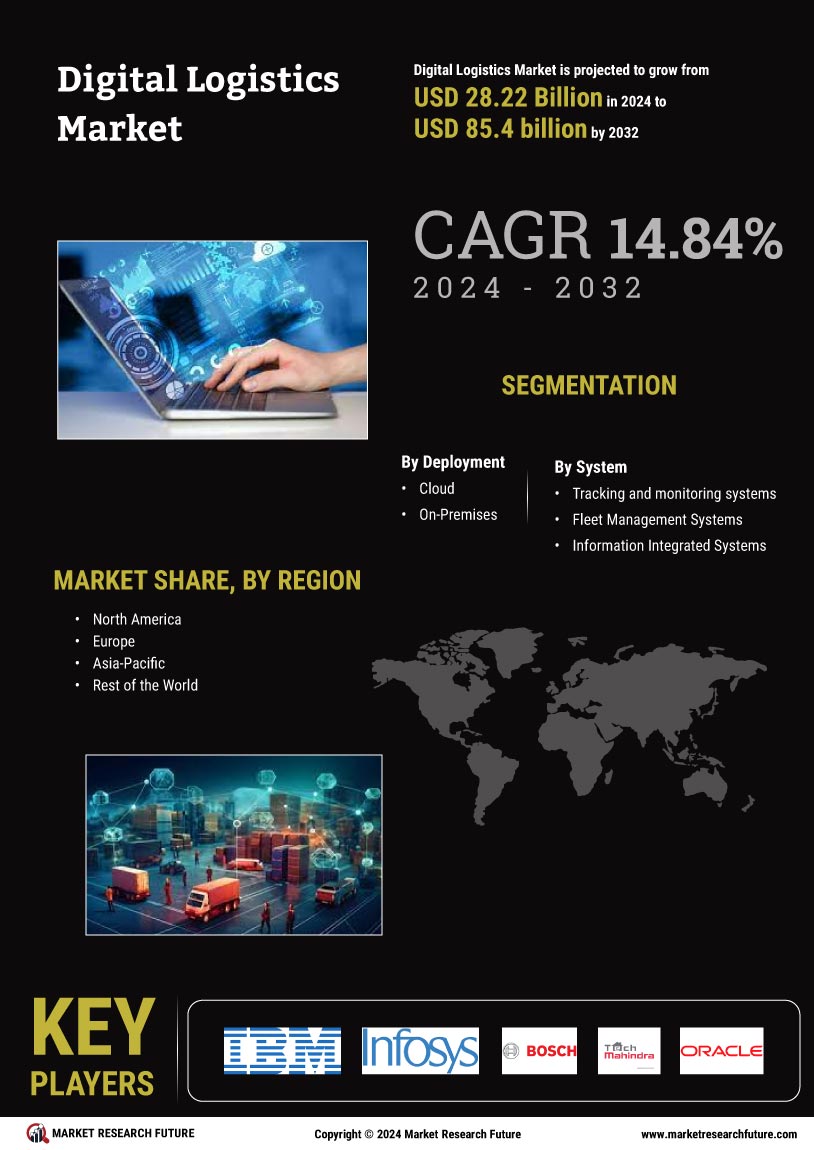Rising E-commerce Demand
The Digital Logistics Market is experiencing a surge in demand driven by the rapid growth of e-commerce. As consumers increasingly prefer online shopping, logistics providers are compelled to enhance their delivery capabilities. In 2025, e-commerce sales are projected to reach approximately 6 trillion USD, necessitating efficient logistics solutions. This trend compels companies to invest in digital logistics technologies to streamline operations, improve delivery times, and enhance customer satisfaction. The integration of advanced tracking systems and automated warehousing solutions is becoming essential for logistics firms to remain competitive. Consequently, the Digital Logistics Market is likely to expand as businesses adapt to the evolving landscape of consumer preferences.
Technological Advancements
Technological innovations are a pivotal driver in the Digital Logistics Market. The advent of artificial intelligence, machine learning, and the Internet of Things is transforming logistics operations. These technologies enable real-time tracking, predictive analytics, and enhanced supply chain visibility. For instance, the implementation of AI-driven algorithms can optimize route planning, reducing transportation costs by up to 20%. Furthermore, the use of IoT devices allows for better inventory management and monitoring of goods in transit. As logistics companies increasingly adopt these technologies, the Digital Logistics Market is expected to witness substantial growth, as firms seek to leverage these advancements for operational efficiency.
Regulatory Compliance and Standards
The Digital Logistics Market is significantly influenced by the need for regulatory compliance and adherence to industry standards. Governments are implementing stricter regulations regarding transportation safety, environmental impact, and data protection. For example, regulations concerning emissions are prompting logistics companies to adopt greener practices, which may involve investing in electric vehicles and sustainable packaging solutions. Compliance with these regulations not only mitigates legal risks but also enhances brand reputation. As a result, logistics firms are increasingly turning to digital solutions that facilitate compliance tracking and reporting, thereby driving growth in the Digital Logistics Market.
Focus on Sustainability and Green Logistics
Sustainability is becoming a central theme in the Digital Logistics Market, as companies strive to reduce their carbon footprint and adopt eco-friendly practices. The increasing awareness of environmental issues is driving logistics providers to implement sustainable logistics solutions, such as optimizing transportation routes and utilizing renewable energy sources. In 2025, it is estimated that the market for green logistics will reach 300 billion USD, reflecting the growing emphasis on sustainability. Companies are also exploring innovative packaging solutions that minimize waste. This focus on sustainability not only meets regulatory requirements but also appeals to environmentally conscious consumers, thereby propelling growth in the Digital Logistics Market.
Consumer Expectations for Speed and Transparency
In the Digital Logistics Market, consumer expectations are evolving, with a growing demand for faster and more transparent delivery services. Customers now anticipate real-time updates on their shipments and quick delivery times, often within a day or two. This shift in consumer behavior is prompting logistics providers to adopt digital solutions that enhance visibility and communication throughout the supply chain. Companies that fail to meet these expectations risk losing market share to competitors who can deliver superior service. As a result, the Digital Logistics Market is likely to expand as firms invest in technologies that improve customer engagement and operational transparency.


















Leave a Comment